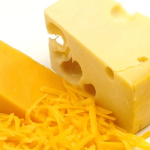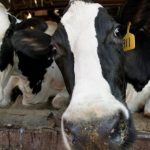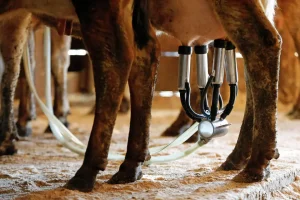
A month ago, market watchers were looking at dismal prices, wondering if May futures contracts for Class III milk would even hit $11 per hundredweight. Now it looks like it’s going to be about $12.30, Bob Cropp, University of Wisconsin dairy economist, said in the latest “Dairy Situation and Outlook” podcast.
“Beyond that, futures have just mushroomed,” he said.
June and July Class III contracts are in the $17s, he said.
Driving the run-up is a surprise jump in the cash prices for dairy products on the Chicago Mercantile Exchange. Prices on cheese barrels and blocks have risen more than 70 cents a pound since the start of May to about $1.90 a pound. Butter prices have increased about 46 cents per pound to about $1.65, and nonfat dry powder is up over $1 a pound from 79 cents, he said.
Fresh supplies might be a little tight. Retail sales are up but can’t offset losses at restaurants, but restaurants are starting to slowly reopen. The federal government is initiating purchases, and milk production growth has slowed, he said.
The spring flush of milk was on the heavy side. But it’s tightening up fast, said Mark Stephenson, director of dairy policy analysis at the University of Wisconsin, said.
Some of that has to do with supply restrictions cooperatives and plants have put on their members, he said.
“We’ve certainly got some folks that are shipping less milk,” he said.
So there’s a little increase in demand and a little slowdown in supply, Cropp said.
“But it’s hard to believe the increases we’ve seen in these product prices. The big question is, can they hold at that level, and that’s a real uncertainty,” he said.
There have been rallies before, and sometimes they don’t go on very long, he said.
“I’d be very cautious these prices are going to hold at the level you’re now seeing on the futures market,” he said.
If he was a dairy producer, he’d be looking at Class III futures and considering revenue insurance, forward contracting or buying put options in the futures market, he said.
Stephenson agreed, saying it “might be a good time to think about just tucking a floor under some of that milk.”
Cow numbers are going down a little, and milk production is going to slow a little but not enough, given the slow start to restaurants reopening, to hold prices where they are now, Cropp said.
Whether there’s a second wave of the pandemic ahead, no one knows. But it has already eroded the economy, Stephenson said.
“This has had a tremendously negative impact on our entire economy and those of other countries around the world,” he said.
U.S. unemployment is already almost 15% and expected to rise to a percentage in the high 20s, much worse than the 2010 recession, he said.
“This recession is going to drag on. I think that that’s going to have a big impact longer term on everything, including dairy product sales and buying,” he said.

























